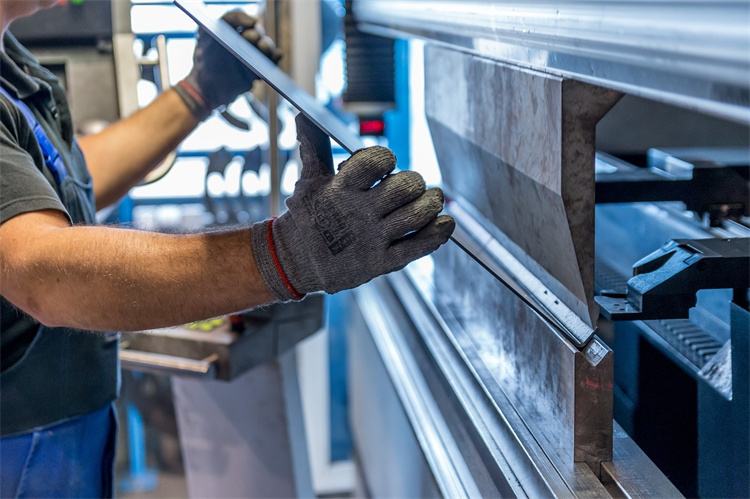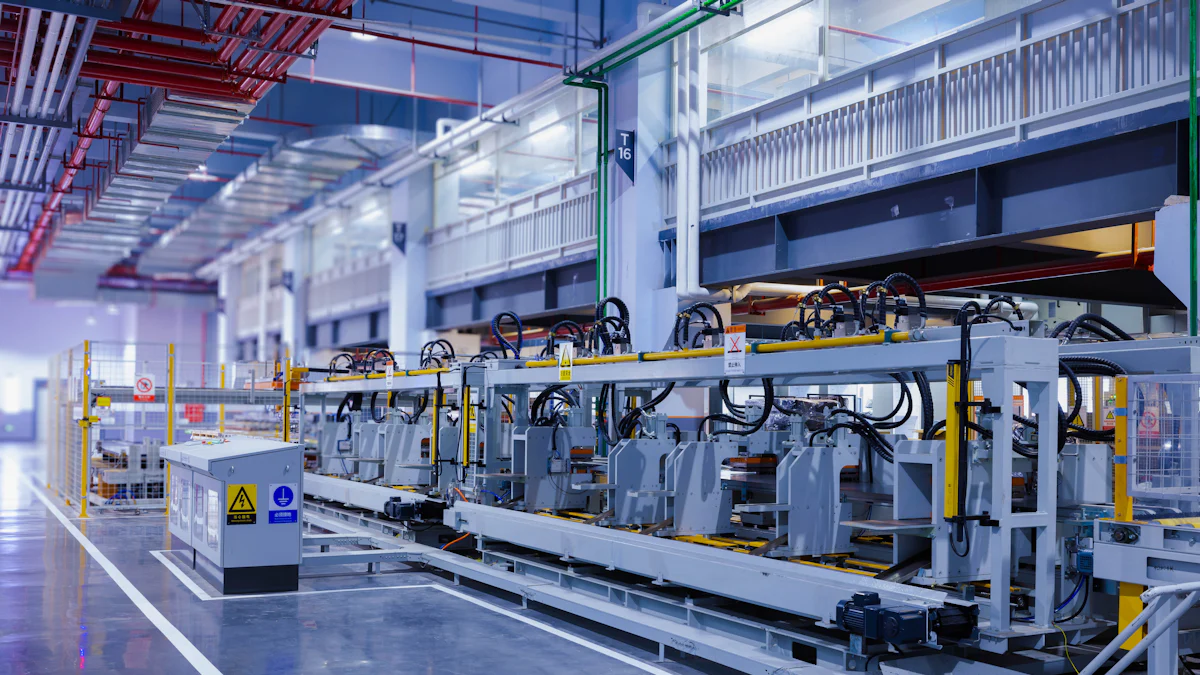Key Trends in South Korea's Manufacturing Supply Chain

South Korea's manufacturing industry stands as a pillar of the nation's economy. The sector generated approximately 530.8 trillion South Korean won in real GDP in 2023. The supply chain plays a crucial role in maintaining efficiency and competitiveness within this industry. Technological innovation, government support, and evolving consumer preferences drive growth and resilience. This blog explores key trends shaping the South Korean Manufacturing Supply Chain.
Technological Advancements in the South Korean Manufacturing Supply Chain

Automation and Robotics
Impact on production efficiency
Automation and robotics have transformed the South Korean Manufacturing Supply Chain. Factories now operate with higher efficiency and precision. Robots handle repetitive tasks, reducing human error. This shift has led to increased productivity and lower operational costs. Companies can now produce goods faster and at a lower cost. The integration of robotics has also enhanced safety in manufacturing environments. Workers face fewer hazardous conditions, leading to fewer workplace injuries.
Case studies of implementation
Hyundai Motor Company implemented robotic systems in its assembly lines. The company reported a 20% increase in production efficiency. Robots performed tasks such as welding and painting with high precision. Samsung Electronics adopted automation in semiconductor manufacturing. This move resulted in a 30% reduction in production time. The company also saw a significant improvement in product quality. These examples highlight the successful integration of robotics in the South Korean Manufacturing Supply Chain.
Internet of Things (IoT)
Integration in supply chain management
The Internet of Things (IoT) has revolutionized supply chain management. IoT devices collect real-time data from various points in the supply chain. This data helps in monitoring and managing inventory levels. Companies can track shipments and manage logistics more efficiently. IoT integration has improved transparency and accountability in the supply chain. Businesses can now make informed decisions based on real-time data.
Benefits and challenges
The benefits of IoT in the South Korean Manufacturing Supply Chain are numerous. Companies experience improved operational efficiency and reduced costs. Real-time data allows for better demand forecasting and inventory management. However, challenges exist. Implementing IoT requires significant investment in technology and infrastructure. Data security remains a concern, as IoT devices can be vulnerable to cyber-attacks. Despite these challenges, the benefits of IoT integration outweigh the drawbacks.
Artificial Intelligence and Machine Learning
Predictive analytics for demand forecasting
Artificial Intelligence (AI) and Machine Learning (ML) play a crucial role in demand forecasting. AI algorithms analyze historical data to predict future demand trends. This capability helps companies manage inventory levels more effectively. Businesses can avoid overstocking or understocking products. Accurate demand forecasting leads to better customer satisfaction and reduced waste. The South Korean Manufacturing Supply Chain benefits greatly from these advancements.
Optimization of logistics and inventory
AI and ML also optimize logistics and inventory management. Algorithms analyze data to find the most efficient routes for transportation. This optimization reduces delivery times and costs. AI systems monitor inventory levels in real-time, ensuring optimal stock levels. Companies can respond quickly to changes in demand, minimizing disruptions. The South Korean Manufacturing Supply Chain has become more resilient and adaptive due to these technologies.
Global Trade Dynamics Affecting the South Korean Manufacturing Supply Chain
Trade Agreements and Policies
Impact of recent trade agreements
Recent trade agreements have significantly impacted the South Korean Manufacturing Supply Chain. The U.S.-Korea Trade Agreement, for instance, has created opportunities for U.S. exporters to sell more goods and services to Korean customers. This agreement increased American goods exports by $10 billion to $11 billion. The agreement also led to the creation of more jobs and business growth.
In 2019, U.S. goods exports to South Korea reached $56.5 billion. This figure marked a 0.4% increase from 2018 and a 97.6% increase from 2009. These numbers highlight the positive impact of trade agreements on the South Korean Manufacturing Supply Chain. Increased trade has led to a more robust and dynamic supply chain.
Regulatory changes and compliance
Regulatory changes also play a crucial role in shaping the South Korean Manufacturing Supply Chain. Compliance with international standards ensures that products meet global quality and safety requirements. South Korea has adopted stringent regulations to align with these standards. These regulations cover various aspects of manufacturing, including environmental protection and labor rights.
Compliance with these regulations enhances the reputation of South Korean products in global markets. Companies must invest in technology and processes to meet these standards. This investment leads to improved product quality and operational efficiency. Regulatory compliance thus serves as a driving force for innovation and competitiveness in the South Korean Manufacturing Supply Chain.
Supply Chain Resilience
Strategies for mitigating disruptions
Supply chain resilience is vital for the South Korean Manufacturing Supply Chain. Companies employ various strategies to mitigate disruptions. Diversifying suppliers is one such strategy. By sourcing materials from multiple suppliers, companies reduce dependency on a single source. This approach minimizes the risk of supply chain disruptions due to geopolitical tensions or natural disasters.
Another strategy involves investing in technology. Advanced analytics and real-time data monitoring help companies anticipate potential disruptions. Predictive analytics enable businesses to take proactive measures. These measures include adjusting inventory levels and rerouting shipments. Technology thus plays a crucial role in enhancing supply chain resilience.
Lessons from recent global events
Recent global events have provided valuable lessons for the South Korean Manufacturing Supply Chain. The COVID-19 pandemic, for example, exposed vulnerabilities in global supply chains. Companies faced challenges such as production halts and shipping delays. These challenges underscored the importance of flexibility and adaptability in supply chain management.
Businesses have since adopted more agile practices. These practices include maintaining buffer stocks and developing contingency plans. Companies have also increased collaboration with supply chain partners. This collaboration ensures better coordination and communication during crises. The South Korean Manufacturing Supply Chain has emerged stronger and more resilient from these experiences.
Sustainability and Green Manufacturing in the South Korean Manufacturing Supply Chain

Environmental Regulations
Compliance with international standards
South Korea's manufacturing sector adheres to stringent environmental regulations. These regulations align with international standards. Compliance ensures that products meet global quality and safety requirements. South Korean companies invest heavily in technology and processes to meet these standards. This investment enhances the reputation of South Korean products in global markets.
Impact on manufacturing processes
Environmental regulations significantly impact manufacturing processes. Companies adopt cleaner production methods to reduce emissions. Factories implement waste management systems to minimize environmental impact. Water and energy conservation measures become integral parts of operations. Compliance with environmental regulations drives innovation in manufacturing processes. This innovation leads to more sustainable and efficient production methods.
Sustainable Practices
Adoption of eco-friendly materials
South Korean manufacturers increasingly adopt eco-friendly materials. These materials include biodegradable plastics and recycled metals. The use of eco-friendly materials reduces environmental impact. Companies also explore renewable resources for production. This shift towards sustainable materials aligns with global environmental goals.
Energy-efficient production methods
Energy-efficient production methods play a crucial role in sustainability. Factories utilize advanced technologies to reduce energy consumption. Automation and robotics enhance energy efficiency in production lines. Companies invest in renewable energy sources such as solar and wind power. Energy-efficient methods lower operational costs and reduce carbon footprints. These practices contribute to the overall sustainability of the South Korean Manufacturing Supply Chain.
Workforce and Labor Trends in the South Korean Manufacturing Supply Chain
Skill Development and Training
Importance of upskilling the workforce
Upskilling the workforce remains crucial for the South Korean Manufacturing Supply Chain. Rapid technological advancements demand a highly skilled labor force. Workers need training in automation, robotics, and IoT applications. Upskilling helps employees adapt to new technologies and processes. This adaptation improves productivity and operational efficiency. Companies investing in workforce development gain a competitive edge.
Government and industry initiatives
The South Korean government has launched several initiatives to support skill development. National programs promote collaboration between universities and industries. These collaborations focus on technology transfer and innovation. Industry leaders also invest in training programs. Companies like Samsung and Hyundai offer specialized courses for employees. These initiatives aim to create a skilled and adaptable workforce.
Labor Market Dynamics
Trends in labor demand and supply
The labor market in the South Korean Manufacturing Supply Chain faces unique challenges. A survey revealed that 92.7 percent of companies hired foreign employees. The primary reason was difficulty in recruiting Korean nationals. Only 2.9 percent cited lower costs as a factor. Labor demand continues to rise due to increased production needs. However, the supply of skilled workers struggles to keep pace.
Impact of demographic changes
Demographic changes significantly impact the labor market. South Korea's aging population leads to a shrinking workforce. Younger generations show less interest in manufacturing jobs. Companies face challenges in attracting and retaining talent. This demographic shift necessitates a focus on automation and robotics. Investing in technology helps mitigate the impact of labor shortages.
Key trends in South Korea's manufacturing supply chain include technological advancements, global trade dynamics, sustainability, and workforce development. Automation, IoT, AI, and ML enhance efficiency and resilience. Trade agreements and regulatory compliance shape market opportunities. Green manufacturing and eco-friendly practices drive sustainability. Skill development addresses labor market challenges.
Future implications suggest continued innovation and adaptation. Companies must embrace new technologies and strategies. Staying updated with industry trends ensures competitiveness and growth. South Korea's manufacturing sector remains a global leader through flexibility and strategic foresight.
See Also
Efficient Strategies for Supply Chain Challenges in High-Tech Manufacturing
Discovering Robotics Innovation: Supply Chain Transformation
Upcoming Trends Driving Supply Chain Effectiveness
Navigating the Path to Manufacturing Excellence: Essential Tactics
